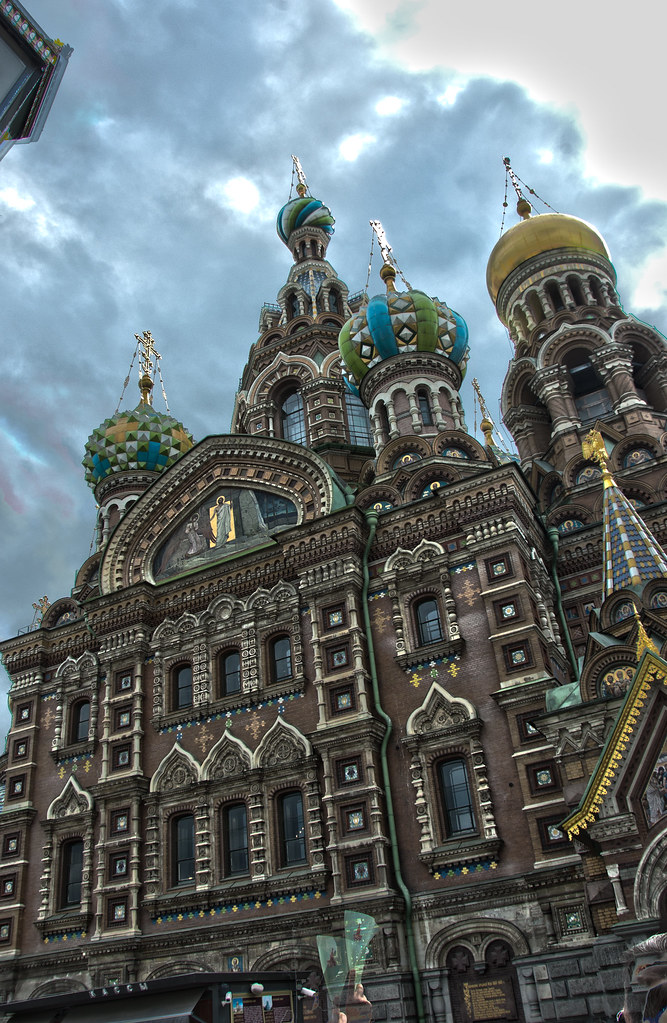
Above: The Church of the Saviour on Spilled Blood - one of the most famous buildings in Saint Petersburg.
Saint Petersburg is located on the Neva River at the head of the Gulf of Finland on the Baltic Sea. It is Russia's second largest city after Moscow with almost 5 million inhabitants. In 1914 the name of the city was changed to Petrograd, in 1924 to Leningrad and in 1991 back to Saint Petersburg. Founded by Tsar Peter the Great on May 27 1703, the city was the Imperial capital of Russia from 1713 to 1728 and from 1732 to 1918, whereupon the central government bodies moved from to Moscow, owing to the advancement of German troops across the West Estonian archipelago.
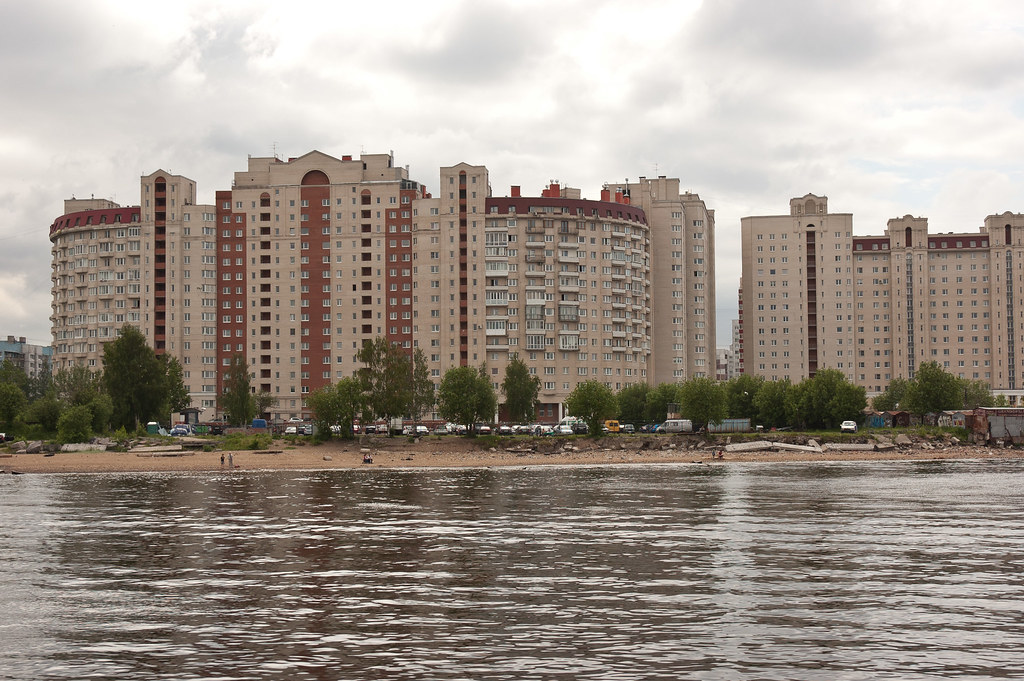
Above: Soviet-era housing dominates the outskirts of the city.
On 7 November 1917, the Bolsheviks, led by Vladimir Lenin, stormed the Winter Palace in an event known thereafter as the Great October Socialist Revolution, which led to the end of the post-Tsarist provisional government, the transfer of all political power to the Soviets, and the rise of the Communist Party.
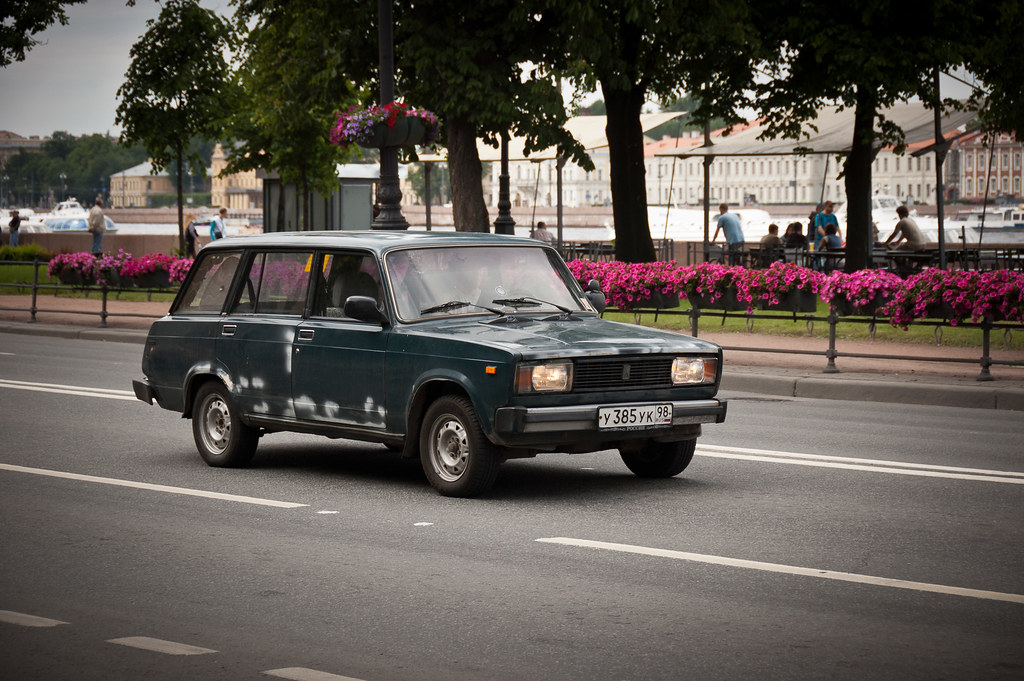
Above: Cars like these were not atypical although we did see many modern vehicles too!
Saint Petersburg is often described as the most Western city of Russia and is a major European cultural centre, with the historic heart of the city a UNESCO World Heritage Site. Unlike in Moscow, in Saint Petersburg the historic architecture of the city centre, mostly consisting of Baroque and neoclassical buildings of the 18th and 19th centuries, has been largely preserved. The oldest of the remaining building is a wooden house built for Peter I in 1703 on the shore of the Neva near Trinity Square.

Above: The Winter Palace of the Hermitage, one of the largest art museums in the world.
During my time in Russia, I took two fairly comprehensive shore excursions which covered many of the main sites in Saint Petersburg. For passengers, these tours are the only way to leave the ship unless you have an expensive visa, so the coaches were always full and I had a hard job counting groups (which is part of your responsibility as a crew escort!) All of the sites were extremely busy and the guides used audio headsets to communicate with the group - an additional complication as not all passengers are as technologically minded as you or I!
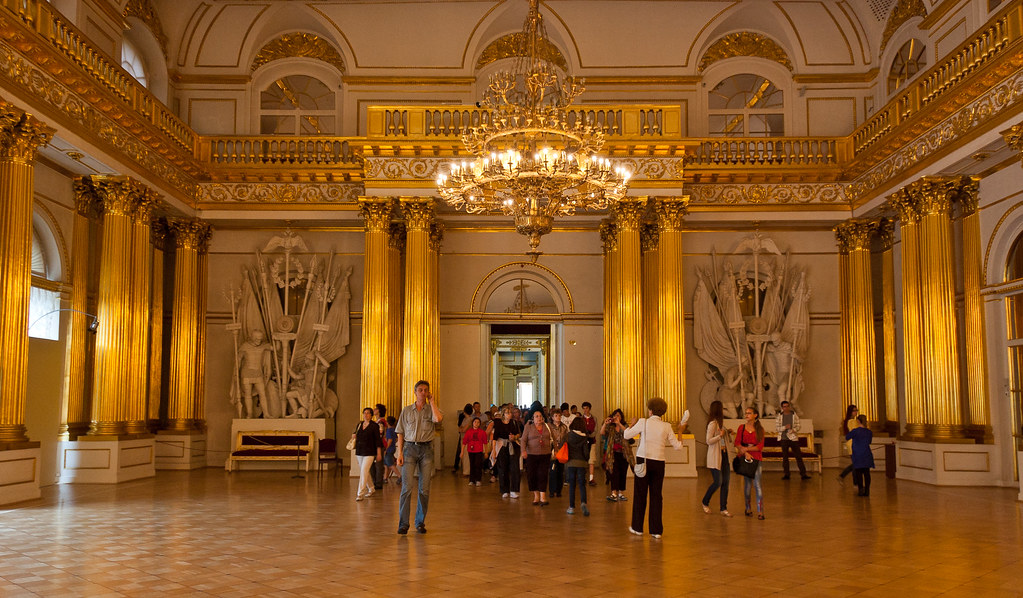
Above: One of the thrones rooms in the Winter Palace at the Hermitage.
One of the shore excursions I took visited the Hermitage museum, one of the largest and oldest museums in the world. The museum was founded in 1764 by Catherine the Great and has been open to the public since 1852. Its collections, of which only a small part is on permanent display, comprise nearly three million items, including the largest collection of paintings in the world.
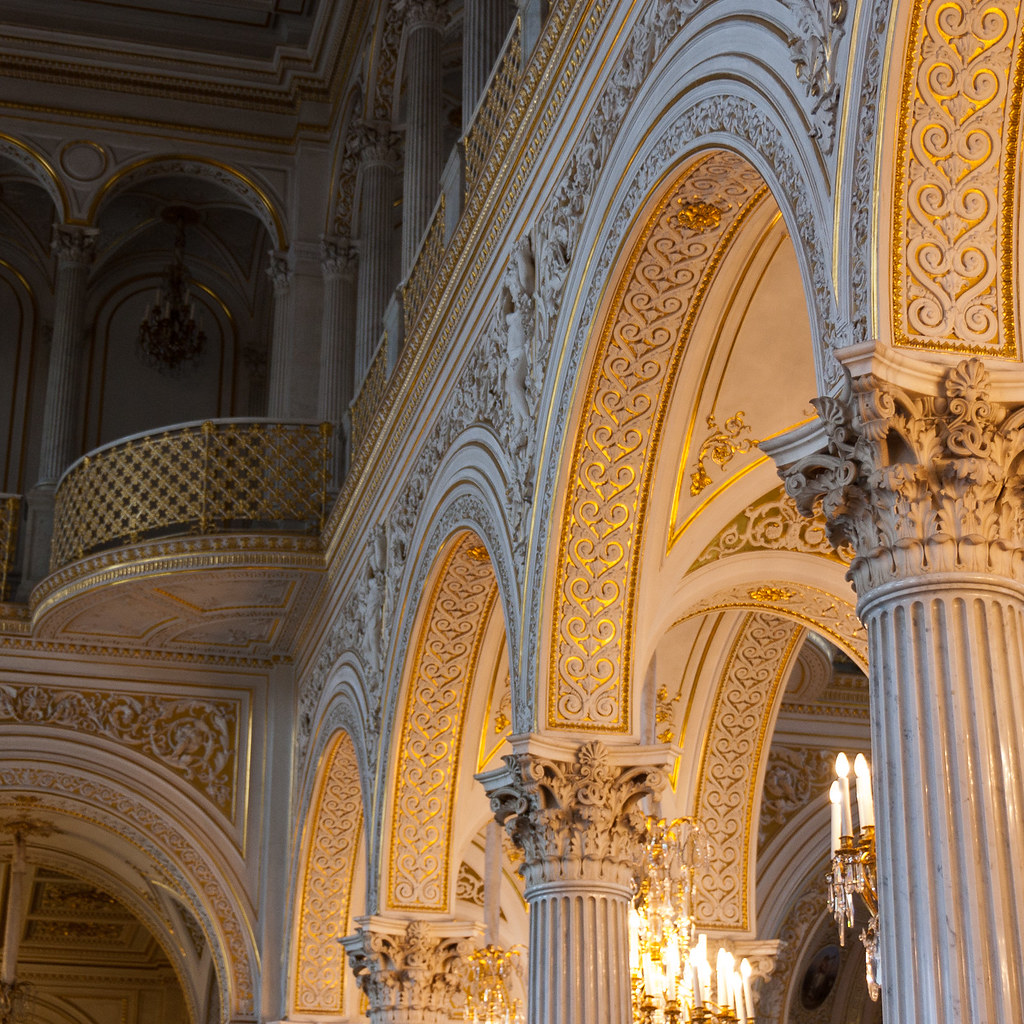
Above: Another impressive room in the Hermitage.
The collections occupy a large complex of six historic buildings along Palace Embankment, including the Winter Palace, a former residence of Russian emperors. In her lifetime Catherine acquired 4,000 paintings from the old masters, 38,000 books, 10,000 engraved gems, 10,000 drawings, 16,000 coins and medals and a natural history collection filling two galleries.
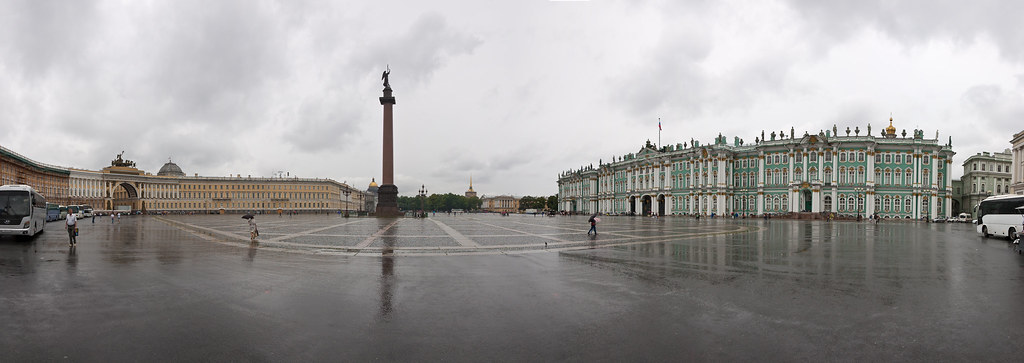
Above: Palace Square comprising of the Winter Palace, Alexander Column and General Staff Building.
It is impossible to see everything in this museum but we caught some of the highlights including Van Gough paintings and the 'Golden Room' which houses incredibly rare gold artefacts from ancient history. The museum's buildings are as much of an attraction as the exhibits themselves which included Egyptian antiquities, Classical antiquities, Prehistoric art, Jewellery and decorative art, Italian Renaissance and Spanish fine art, Dutch Golden Age, Flemish Baroque, German, British, Swiss and French fine art as well as Neoclassical, Impressionist, and post-Impressionist art.
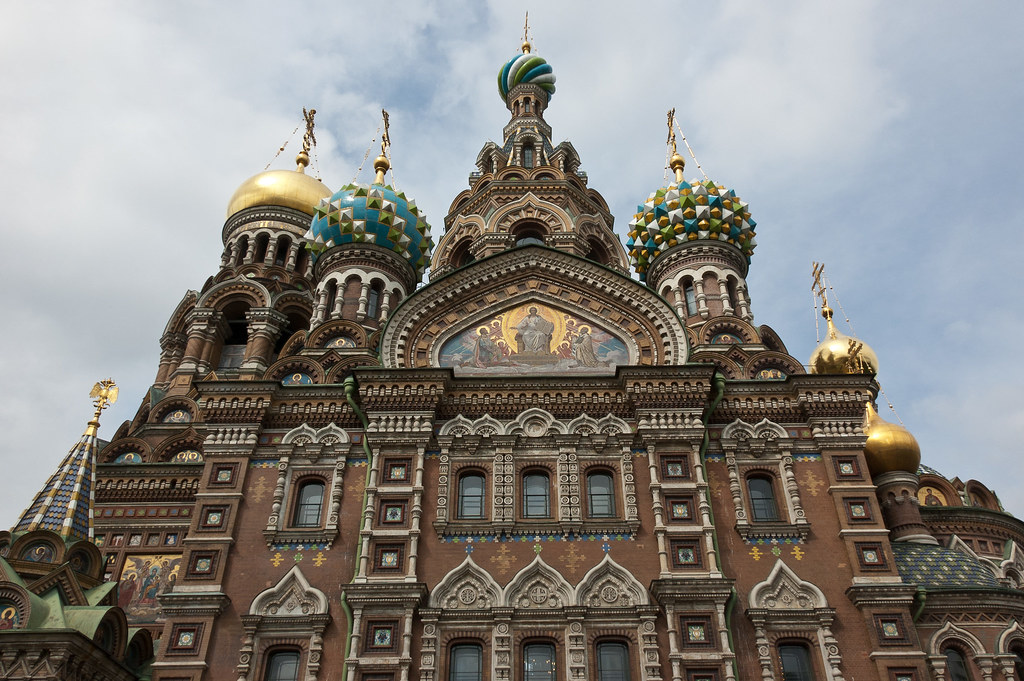
Above: The rear view of the Church of the Saviour on Spilled Blood.
Along with the Hermitage, the Church on Spilled Blood is one of the most famous attractions in central Saint Petersburg. Construction began in 1883 under Alexander III, as a memorial to his father, Alexander II. On March 13, 1881, as Tsar Alexander's carriage passed along the embankment, a grenade thrown by an anarchist conspirator exploded. The tsar, shaken but unhurt, got out of the carriage and started to remonstrate with the presumed culprit. A second conspirator took the chance to throw another bomb, killing himself and mortally wounding the tsar. The tsar, bleeding heavily, was taken back to the Winter Palace where he died a few hours later.

Above: Inside the Church. Every single surface is covered in astonishing mosaic artwork.
It was decided that the section of the street where the assassination had taken place was to be enclosed within the walls of a church. Inside, an elaborate shrine was constructed on the exact place of Alexander's death, garnished with topaz, lazurite and other semi-precious stones. Amid such rich decoration, the simple cobblestones on which the tsar's blood was spilled and which are exposed in the floor of the shrine provide a striking contrast.
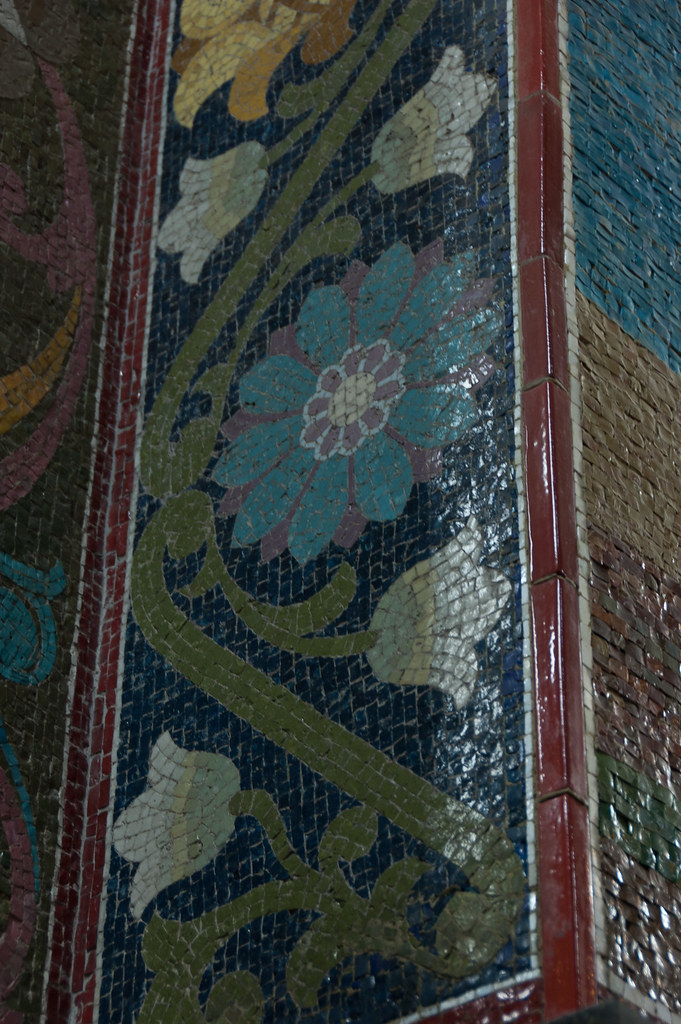
Above: You can see the mosaic texture more clearly here.
Architecturally, the Cathedral differs from St. Petersburg's other structures. The city's architecture is predominantly Baroque and Neoclassical, but the Saviour on Blood harks back to medieval Russian architecture in the spirit of romantic nationalism. The Church contains over 7500 square metres of mosaics—according to its restorers, more than any other church in the world.

Above: More incredible artwork.
Thanks for reading and I'll be back soon with part two featuring two of the most incredible palaces I have seen - Catherine's Palace and Peterhof.

No comments:
Post a Comment